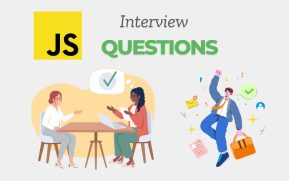Mastering Git is a must-have skill for modern developers. It’s not just about version control; it showcases your ability to collaborate effectively. Acing your next coding interview hinges on demonstrating Git proficiency.
This comprehensive guide unveils the top 30 Git interview questions and answers, categorized for easy navigation. Whether you’re a seasoned Git pro or a curious newcomer, this post equips you with the knowledge to impress any interviewer.
Get Ready to Shine: Essential Git Concepts
Before diving into specific questions, let’s solidify some core Git concepts:
- Repository (Repo): A central storage for all your project files and their revision history.
- Branch: An independent line of development within a repository.
- Commit: A snapshot of your project’s state at a specific point in time.
- Staging Area: Files designated for inclusion in the next commit.
- Remote Repository: A copy of your local repository hosted on a platform like GitHub.
Level Up Your Git Knowledge: Interview Question Powerhouse
Basic Git Interview Questions:
1. What is Git?
Answer: A distributed version control system for tracking changes in code over time.
2. How do you initialize a Git repository?
Answer: Use the git init command.
3. What’s the difference between git add and git commit?
Answer: git add stages files for the next commit, while git commit captures the staged changes with a message.
4. How do you view the history of commits?
Answer: Use git log to see a list of commits.
Branching and Merging:
What is a Git branch?
Answer: A separate line of development forking from the main codebase.
How do you create a new branch?
Answer: Use git branch <branch_name>
How do you switch between branches?
Answer: Use git checkout <branch_name>
Explain the merging process.
Answer: Combining changes from one branch into another.
How do you resolve merge conflicts?
Answer: Manually fix conflicting changes in the code.
Remote Repositories and Collaboration:
What is a remote repository?
Answer: A copy of your local repository hosted online.
How do you clone a remote repository?
Answer: Use git clone <remote_repository_url>
What is the git push command used for?
Answer: Uploads local commits to the remote repository.
How do you pull updates from the remote repository?
Answer: Use git pull to fetch and merge changes from the remote branch.
Explain the concept of origin. (Answer: A shorthand reference to the default remote repository.
Advanced Git Techniques:
What is Git stash?
Answer: Temporarily saves uncommitted changes for later use.
How do you revert to a previous commit?
Answer: Use git checkout <commit_hash> or git revert <commit_hash>
Explain how to ignore specific files or patterns with .gitignore.
Answer: A file specifying patterns of files to exclude from version control.
What are tags in Git?
Answer: Lightweight references to specific commits for version identification.
How do you deal with merge conflicts during a pull request?
Answer: Collaborate with teammates to resolve conflicts before merging.
Beyond the Basics:
Describe the difference between centralized and distributed version control systems.
Answer: Centralized systems have a single server, while distributed systems like Git have copies on each developer’s machine.
Explain the benefits of using Git for collaborative development.
Answer: Efficient version tracking, conflict resolution, and easy contribution management.
How can Git improve code quality?
Answer: Enables reverting to stable versions and tracking changes for better code review.
What are some best practices for using Git effectively?
Answer: Clear and concise commit messages, frequent branching, and regular synchronization.
Interview Simulation (Bonus Git Questions!):
Walk the interviewer through your typical Git workflow.
This showcases your understanding of the overall process.
Explain a scenario where you resolved a merge conflict.
Demonstrate your problem-solving skills in a collaborative setting.
How would you handle a situation where you accidentally committed a bug?
Highlights your ability to fix mistakes and maintain code quality.
Describe your experience with Git branching strategies (e.g., feature branching, Gitflow).
Demonstrates knowledge of advanced techniques for complex projects.)
What resources do you use to stay updated on Git best practices and new features?
Shows your commitment to continuous learning and keeping your skills sharp.
Conclusion: Mastering Git for Interview Success and Beyond
Equipping yourself with these top Git interview questions and answers positions you for a confident and successful interview. Remember, Git mastery goes beyond acing the interview. It empowers you to collaborate seamlessly, streamline your development process, and ultimately, deliver high-quality code. Take the initiative to explore Git’s functionalities further, experiment with different workflows, and stay updated on best practices. By wielding Git effectively, you’ll not only impress interviewers but also unlock your full potential as a developer contributing to exceptional software projects.
This comprehensive guide empowers you to conquer Git interviews and become a Git pro, enhancing your resume and propelling your development career forward.

